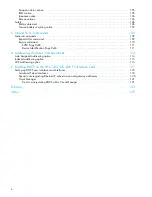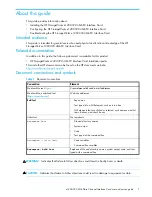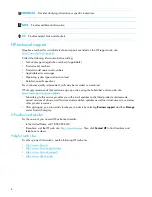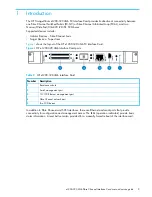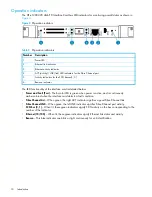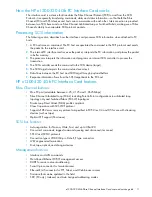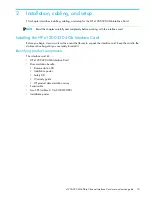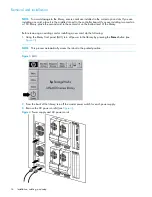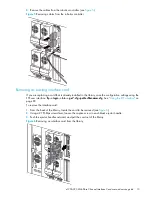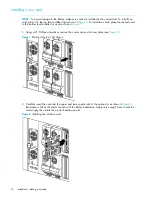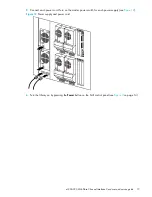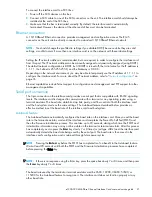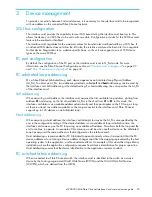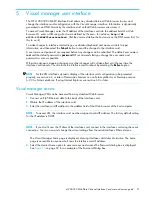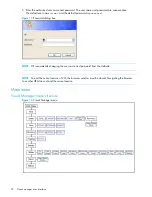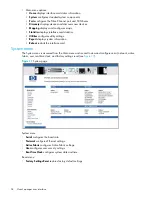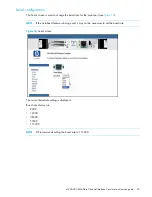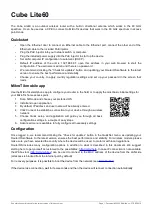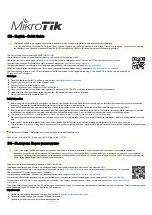
20
Installation, cabling, and setup
Interfaces and connections
There are four types of interfaces to the interface card:
•
Fibre Channel
•
SCSI
•
3-pin serial port
•
Ethernet
The 3-pin serial and Ethernet ports are used for configuration and management of the interface card.
For convenience in configuring ports, key information is indicated on a label located on the face of the
interface card such as WWN name, WWP name, and Ethernet MAC ID (Physical Address).
Fibre Channel connections
Before connecting the interface card to other devices, it is important to understand the configuration
requirements of the environment to which it is connected. Failure to correctly configure a Fibre Channel
device may impair the operation of the Storage Area Network (SAN) to which it is attached.
Typical installations have the interface card connected to a Switched Fabric environment. For an Arbitrated
Loop, the unit can be directly attached to the Fibre Channel host bus adapter. In Fibre Channel switched
environments, the switch is also directly attached to the interface card.
Both FC switches and hubs may allow for individual ports to be configured for different media types. The
interface card must be connected to the hub or switch port with the appropriate FC cabling for the media
type in use on both the interface card and the port to which it is connected.
The interface card supports various Fibre Channel media types through the use of external Small Form
Factor Pluggable Transceivers (SFPs).
Supported media type:
Multi-Mode Fiber
-
4.25 Gbit Dual LC connectors.
To connect the interface card to the Fibre Channel SAN:
1.
Locate the Fibre Channel port on the interface card (see
Figure 1
on page 9).
2.
Remove the rubber protector from the SFP.
3.
With the library powered off, connect the interface card into the Fibre Channel environment using the
appropriate cabling. The FC optical connector on the interface card is keyed. Be sure to insert the
cable connectors in the proper orientation.
SCSI connection
The interface card can support Fast/Ultra320 Narrow/Wide SCSI, depending on the specific
configuration. The interface card is factory configured to support LVD/Single-Ended buses. Two VHDCI
68-pin D-shell, P-type connectors are available, allowing the unit to be attached at the end of up to two
SCSI buses. The interface card must always be installed at the end of SCSI buses.
The interface card supplies termination power (TERMPWR) to each SCSI bus. An internal self-resetting fuse
in the TERMPWR resets after a fault is cleared.
CAUTION:
Do not plug HVD devices to an LVD/SE bus. Failure to follow this caution may result in severe
damage to equipment.
CAUTION:
SCSI ports on the interface card are not hot-pluggable. Power off the library whenever
connecting/disconnecting the SCSI cables.
Summary of Contents for StorageWorks e1200-320
Page 26: ...26 Device management ...
Page 30: ...30 Interface card management ...
Page 92: ...92 Using the FTP interface ...
Page 98: ...98 Troubleshooting ...
Page 102: ...102 Serial and Ethernet pin assignments ...
Page 108: ...108 Regulatory compliance and safety ...
Page 122: ...122 Enabling DHCP on the HP e1200 320 4Gb FC Interface Card ...

